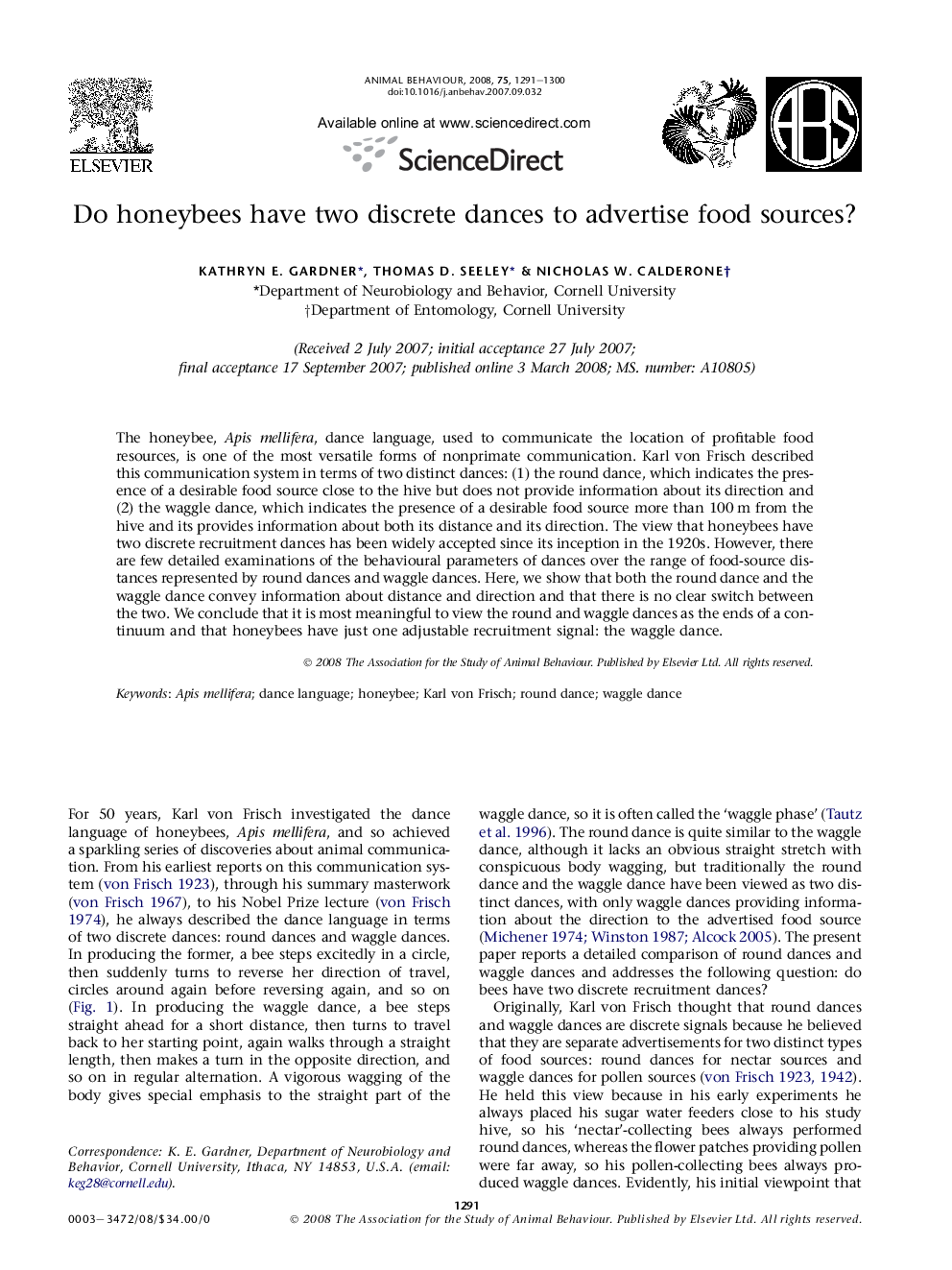| Article ID | Journal | Published Year | Pages | File Type |
|---|---|---|---|---|
| 2417744 | Animal Behaviour | 2008 | 10 Pages |
The honeybee, Apis mellifera, dance language, used to communicate the location of profitable food resources, is one of the most versatile forms of nonprimate communication. Karl von Frisch described this communication system in terms of two distinct dances: (1) the round dance, which indicates the presence of a desirable food source close to the hive but does not provide information about its direction and (2) the waggle dance, which indicates the presence of a desirable food source more than 100 m from the hive and its provides information about both its distance and its direction. The view that honeybees have two discrete recruitment dances has been widely accepted since its inception in the 1920s. However, there are few detailed examinations of the behavioural parameters of dances over the range of food-source distances represented by round dances and waggle dances. Here, we show that both the round dance and the waggle dance convey information about distance and direction and that there is no clear switch between the two. We conclude that it is most meaningful to view the round and waggle dances as the ends of a continuum and that honeybees have just one adjustable recruitment signal: the waggle dance.
